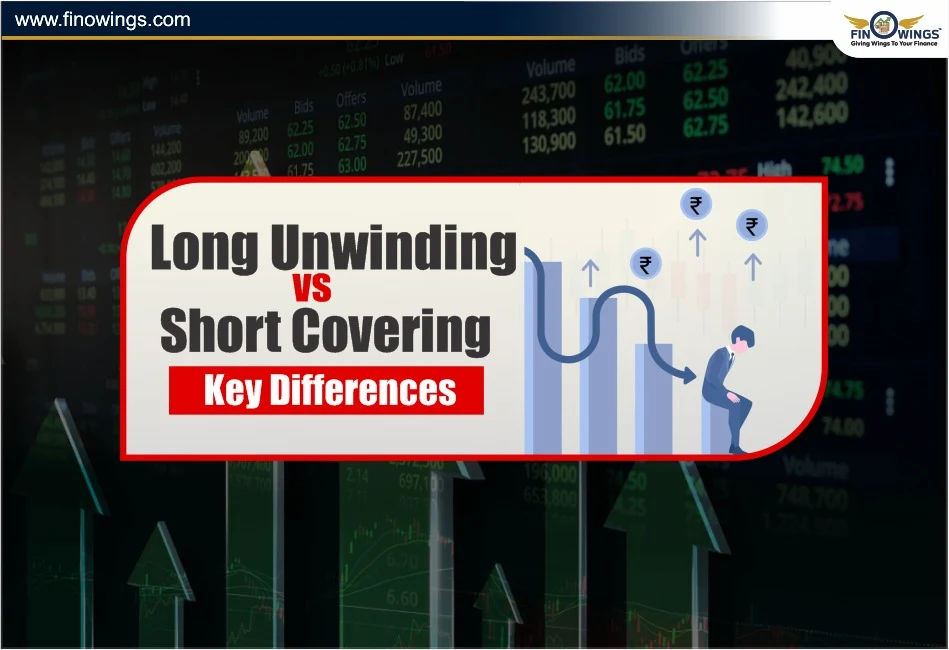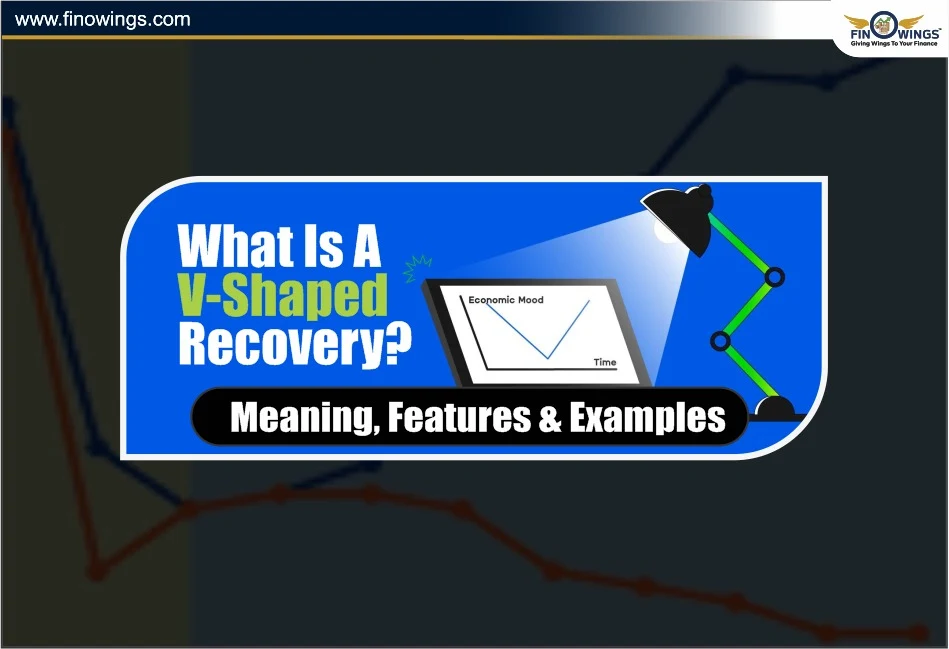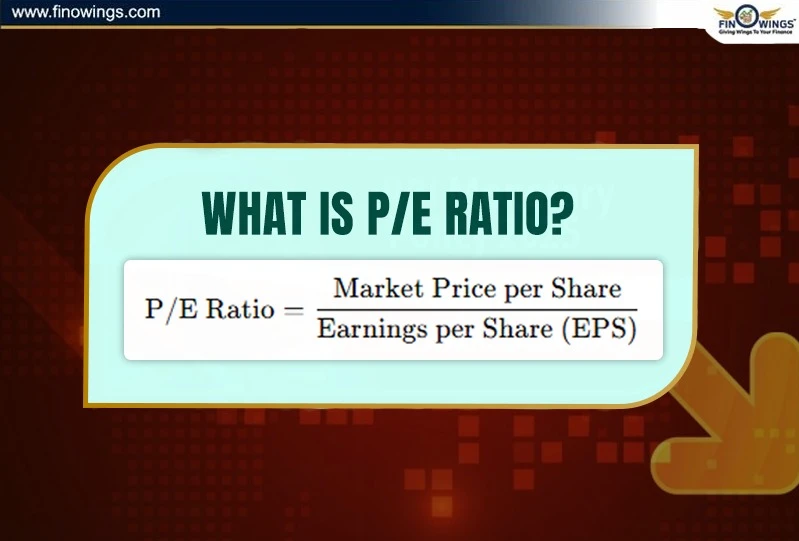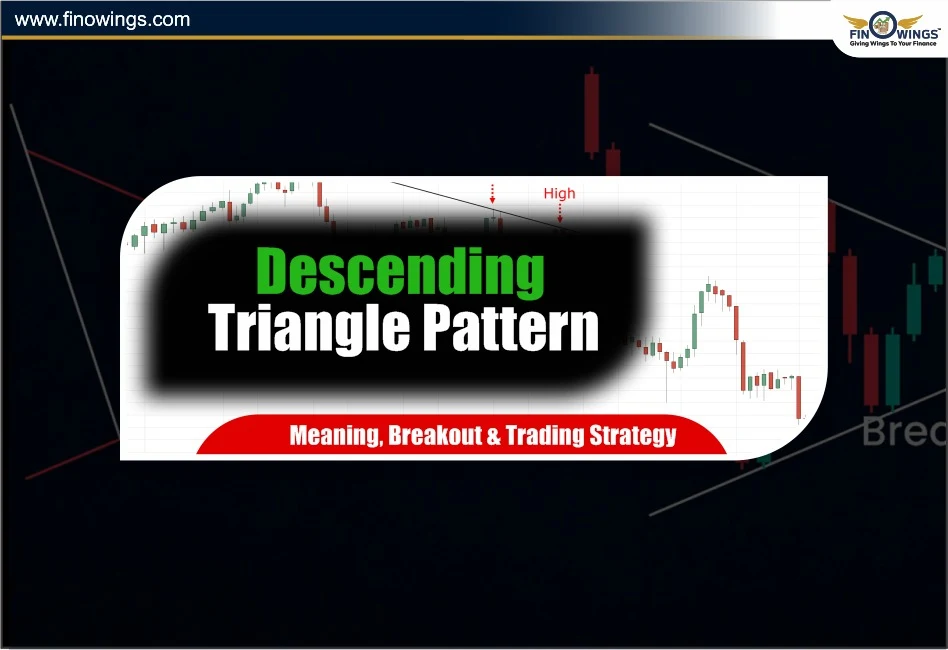Home >> Blog >> Long Unwinding vs Short Covering: Key Differences
Long Unwinding vs Short Covering: Key Differences

Table of Contents
- What Is Long Unwinding?
- Long Unwinding Meaning In Stock Market
- What Is Short Covering in Share Market?
- Short Covering in Share Market
- Is Short Covering Bullish or Bearish?
- Key Differences Between Long Unwinding and Short Covering
- What Happens After Short Covering?
- Identifying Long Unwinding and Short Covering in Futures Data
- Identifying Long Unwinding Stocks and Short Covering Stocks
- Strategies for Trading Long Unwinding and Short Covering
- Conclusion
When analysing derivatives or futures positions, people in the stock market frequently encounter the phrases long unwinding and short covering. With respect to stock or index movements, these two concepts are critical as they show what FII, institutional investors, and traders are doing.
In this blog, we will define what long unwinding is, what short covering is, their definition in the stock market, the primary differences, and what occurs after these movements.
What Is Long Unwinding?
Long Unwinding Meaning- Long unwinding describes a situation in which traders who have taken long positions (meaning they bought stocks or futures and anticipated the prices to rise) begin closing or selling those positions to realise gains, or to cut potential losses.
With this in mind, long unwinding simply means traders are exiting their bought positions.
This occurs primarily for these reasons:
-
Stock prices have increased to a point where traders decide to realise their gains.
-
There is a weak or cautious market.
-
There are domestic or global signals that suggest a limited upside.
Long Unwinding Meaning In Stock Market
In the stock market, long unwinding signals that the bullish momentum is losing its momentum.
When traders sell their long positions, it generates selling pressure, which helps balance price volatility. However, this phenomenon does not automatically indicate bearish activity; it may signify profit booking or trend exhaustion.
For instance, traders may purchase Reliance Futures at ₹2,300 and expect the price to rise to ₹2,400. If the price reaches ₹2,380, traders may start selling the position, and this selling activity is known as long unwinding.
Indicators of Long Unwinding
-
Price declines.
-
Open Interest (OI) drops.
-
Trading volume may be moderate or inactive.
Interpretation:
Price ↓ and OI ↓ = Long Unwinding
This indicates existing buyers are closing their positions and new buyers are not coming in, which is selling exhaustion or consolidation.
What Is Short Covering in Share Market?
Short covering is when traders who had previously shorted (sold first anticipating a price drop) their position are now closing their trade by buying back the shares. In essence, short covering is the activity of traders exiting their sell positions.
This buying activity often causes a sharp price rise as multiple short sellers rush to cover their positions at the same time.
Short Covering in Share Market
Short covering in the share market usually occurs during or after a period of heavy selling in the market or during bearish sentiment. As soon as traders see a market reversal or a period of stagnation, they begin to buy aggressively to cover their shorts.
Example of Short Covering in Stock Market
Imagine traders shorted Infosys Futures at ₹1,600, expecting the price to go down to ₹1,550. If the stock instead moves to ₹1,620, the short sellers begin to buy the stock to prevent greater losses. The increase in buying at this stage is what causes the further increase in price, or as it is labelled, short covering.
Is Short Covering Bullish or Bearish?
Is short covering bullish or bearish? The short answer is: Short covering is bullish in the short term. When closing out short positions, traders buy back their shares, which increases demand. This demand causes the price to increase, usually at a rapid pace, marking the beginning of a short term uptrend.
However, this bullish sentiment can quickly dissipate in the absence of fresh buying. This is to say that while short covering is short-term bullish, the market is in need of a genuine long build-up for a sustained rally.
Key Differences Between Long Unwinding and Short Covering
|
Parameter |
Long Unwinding |
Short Covering |
|
Position Type |
Traders closing long (buy) positions |
Traders closing short (sell) positions |
|
Market Sentiment |
Weak or neutral |
Recovering or turning bullish |
|
Price Action |
Price falls |
Price rises |
|
Open Interest (OI) |
Decreases |
Decreases |
|
Reason |
Profit booking or loss-cutting by buyers |
Loss-cutting by short sellers |
|
Impact |
Indicates fading bullish momentum |
Indicates reversal from bearish sentiment |
|
Example |
Reliance Futures: Price ↓, OI ↓ |
Infosys Futures: Price ↑, OI ↓ |
Summary:
Price ↓ + OI ↓ = Long Unwinding
Price ↑ + OI ↓ = Short Covering
What Happens After Short Covering?
After a short covering rally:-
-
Prices may continue to rise if fresh long positions are built.
-
If no fresh buying follows, the rally may fade quickly.
-
It often acts as a trigger for a short-term trend reversal or a relief rally.
For instance, when indices like Nifty or Bank Nifty show a sudden rise with declining OI, it often signals short covering - and can be followed by long build-up if confidence returns.
Identifying Long Unwinding and Short Covering in Futures Data
Traders analyse price and open interest (OI) data to identify market actions:-
|
Price Movement |
Open Interest Movement |
Market Action |
|
Price ↑, OI ↑ |
Long Build-Up |
Bullish |
|
Price ↓, OI ↓ |
Long Unwinding |
Weak / Neutral |
|
Price ↓, OI ↑ |
Short Build-Up |
Bearish |
|
Price ↑, OI ↓ |
Short Covering |
Bullish Reversal |
By tracking F&O (Futures & Options) data, traders can spot these shifts early and position themselves accordingly.
Identifying Long Unwinding Stocks and Short Covering Stocks
Every day, the stock market, NSE and BSE, publish F&O data that shows what stocks are experiencing long unwinding or short covering.
Examples:
Long Unwinding Stocks: A stock that has seen a decline in both price and open interest is one that is experiencing long unwinding, e.g. Tata Steel, ITC, or Axis Bank during weak phases.
Short Covering Stocks: A stock that is experiencing a decline in open interest while the price increases is experiencing short covering, e.g. Infosys, SBI, or HDFC Bank during rebound sessions.
Traders utilise this information to determine the market sentiment and predict near-term price movements.
Strategies for Trading Long Unwinding and Short Covering
1. Confirm with Data: Check both price and open interest.
2. Use Technical Indicators: Data should accompany RSI, MACD, or other volume based indicators.
3. Follow Market Trends: Avoid trading against the overall market.
4. Watch Sectoral Patterns: Sectors tend to align in their positioning, e.g. IT or Banking.
5. Stay Updated: Daily F&O data publications from NSE are a great resource.
Conclusion
To conclude, long unwinding and short covering are critical components in the analysis of market psychology. Long unwinding essentially means that traders are consolidating, which suggests caution or consolidation. Short covering refers to the act of exiting short positions which indicates a short-term bullish reversal.
Considering both the price and the open interest provides meaningful clues as to whether a market is due to decline, is likely to rebound, or is likely to continue a trend. If you want to improve your understanding of market setups and futures data, these ideas are the first building blocks toward more intelligent trading decisions.
DISCLAIMER: This blog is NOT any buy or sell recommendation. No investment or trading advice is given. The content is purely for educational and information purposes only. Always consult your eligible financial advisor for investment-related decisions.














.webp)


